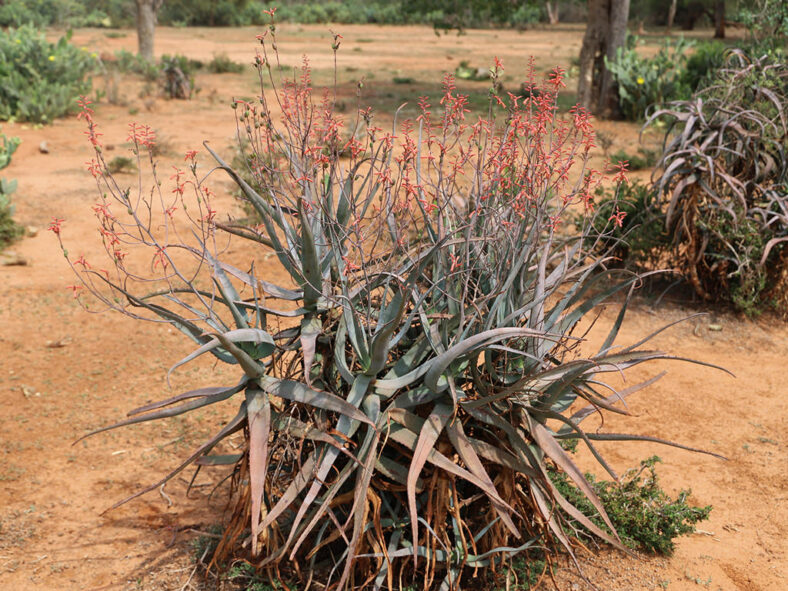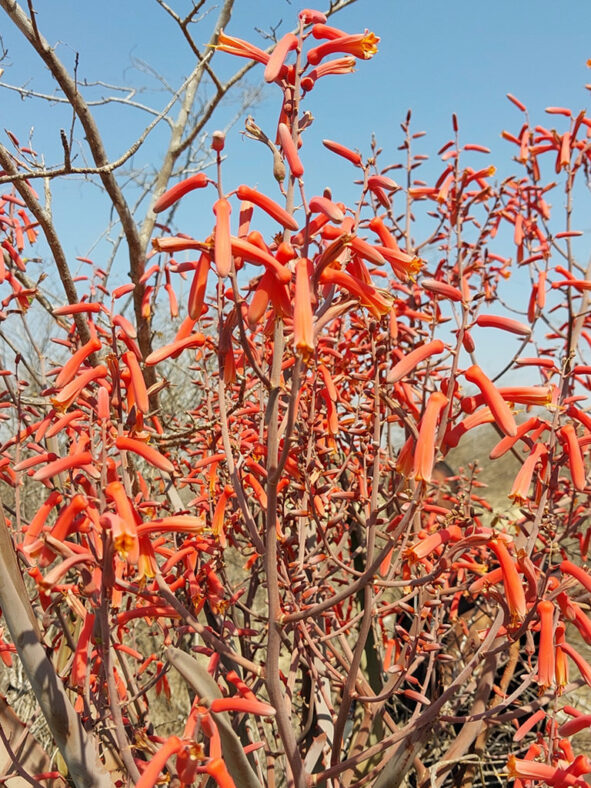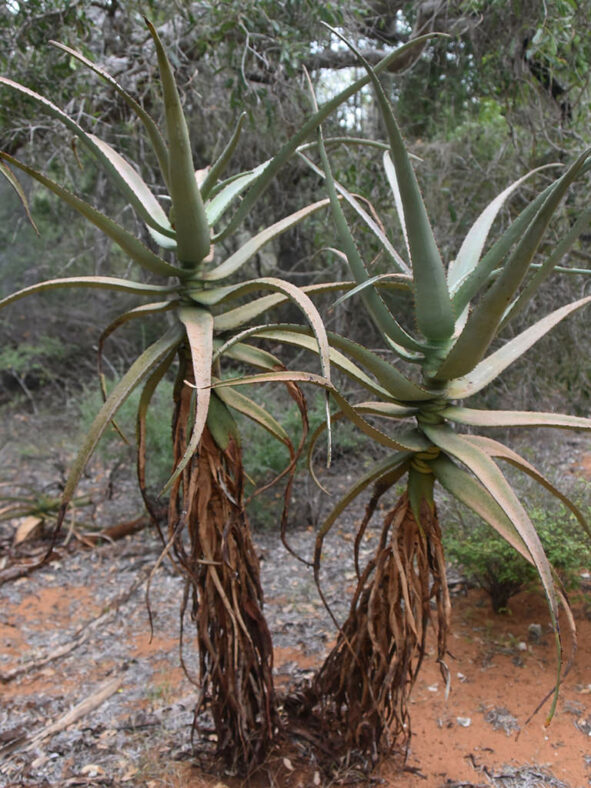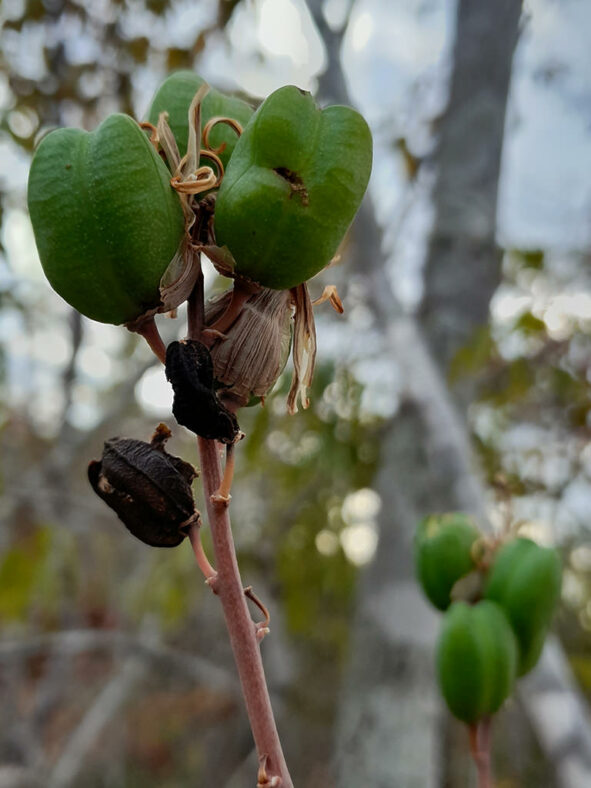Aloe divaricata was first described by Alwin Berger in 1905. As with all Madagascan species, it is used as medicine.
Scientific Name
Aloe divaricata A.Berger
Synonym(s)
Aloe divaricata subsp. divaricata
Scientific Classification
Family: Asphodelaceae
Subfamily: Asphodeloideae
Genus: Aloe
Etymology
The specific epithet "divaricata" (pronounced "dy-vair-ih-KAY-tuh") means "spread out" and refers to the branches of the inflorescence.
Origin
Aloe divaricata is native to Madagascar. The subspecies Aloe divaricata subsp. divaricata grows in arid bush vegetation on sandy soils and in coastal thickets at elevations from sea level up to 2,600 feet (800 m).
Description
Aloe divaricata is a succulent plant that may grow as a single-stemmed tree or a more or less open shrub. The stems can reach up to 20 feet (6 m) in height but are usually shorter. The stems bear a rosette of erect or somewhat recurved leaves at their ends. The sword-shaped leaves can measure up to 3.3 feet (1 m) long and 2.8 inches (7 cm) wide. They are dull blue-green to reddish or gray-purple with prominent, red, sharp teeth along the margins. As the leaves age, they dry out, turn brown, and curl downward, forming a skirt around the stem.
During winter, Aloe divaricata produces coral-red flowers arranged in much-branched inflorescences that can reach up to 3.3 feet (1 m) in height. The fruits are green capsules that dry out and split open to release the tiny, dark brown to black seeds.

How to Grow and Care for Aloe divaricata
Light: When growing Aloe divaricata indoors, place it in a window with plenty of bright, indirect light. Rotate the pot once or twice a week to ensure all sides of the plant receive equal lighting. Outdoors, the plant prefers light shade, especially during the hottest parts of the day.
Soil: Great drainage is essential for growing this plant because too much moisture for an extended period can cause root rot. Use commercial soil for succulents, or make your own well-draining mix.
Temperature: When temperatures shift below 50°F (10°C), it is time to bring this plant inside. It tolerates heat fairly well but will not survive a hard frost. Aloe divaricata grows best in USDA Plant Hardiness Zones 9b to 11b, with average minimum winter temperatures ranging from 25°F to 50°F (-3.9°C to 10°C).
Watering: This plant needs regular watering, but can tolerate drought conditions for short periods. Water deeply, but only when the soil is completely dry to the touch, and do not let water stand in the rosettes. Cut back on watering during the winter months.
Fertilizing: Although it generally does not require fertilizer, Aloe divaricata will benefit from extra nutrients. Use a water-soluble fertilizer diluted to half the recommended strength.
Repotting: Repot only as needed during spring. Pick a container that is one size larger and has drainage holes.
Propagation: To propagate Aloe divaricata, remove the offsets from a mature plant from late spring to early summer. It is also easy to start from seeds. For best results, sow the seeds during the warm months.
Learn more at How to Grow and Care for Aloe.
Toxicity of Aloe divaricata
Aloe divaricata is non-toxic to people but is mildly to moderately toxic to pets.
Hybrids of Aloe divaricata
Links
- Back to genus Aloe
- Succupedia: Browse succulents by Scientific Name, Common Name, Genus, Family, USDA Hardiness Zone, Origin, or cacti by Genus
Photo Gallery
Click on a photo to see a larger version.


